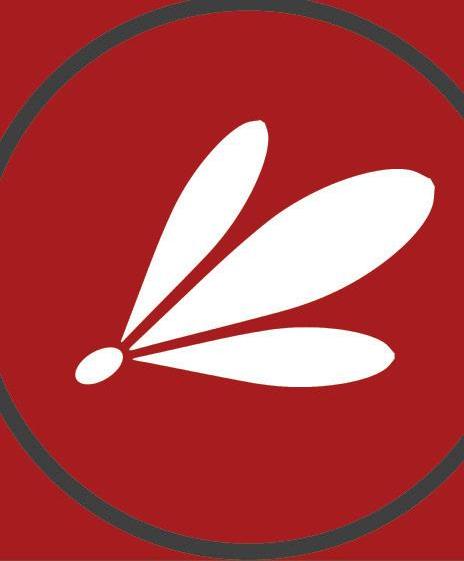
13 minute read
Managing Social Media fatigue
from 24 August 2020 Issue 11 Year 82
by PDBY - Official student newspaper of the University of Pretoria
To Invest or Not to Invest
Carli Botha
Advertisement
Investing is defined on dictionary.com as “putting money into financial schemes, shares, property, or a commercial venture with the expectation of achieving a profit”. A common misconception is that investing is reserved for brokers or other professionals in the finance industry. This is not the case in 2020, as students can also start investing today.
Joshua Prins, co-founder of FinChat, an online platform with the purpose to “minimise the financial knowledge gap in South Africa and to empower the youth”, shared his personal investment journey with PDBY. Prins stated that he started with the JSE Investment Challenge. This challenge is available to students and scholars, who play with demo money and go through the process of investing in shares and making profits or losses. Prins explains that he started out having to learn everything about investing himself, and believes that “experience is the best resource”. Gaining experience in investing early is also noted in the biography, Warren Buffett: The making of an American Capitalist. Roger Lowenstein writes about the investing giant’s first stock purchase, which he made when he was only 11. Today, Buffett is known as one of the world’s most successful investors.
Where to start
For students starting out, Prins has three recommendations. “Firstly, open a tax-free savings account at your personal bank”. Tax-free savings accounts, according to the latest SARS information, allow an individual to deposit R36 000 per tax year or R500 000 during their lifetime without paying tax. Interest is earned annually and can be paid out monthly. His second recommendation is using Franc, an investment app created by Thomas Brennan and Sebastian Patel that enables easy access to investing. It is a lower risk, lower cost alternative for students or individuals just starting out with investing. On their homepage, franc.app, their aim states that they “believe everyone should be able to access the best investments”. Lastly, Prins suggests the app Easy Equities as a next step for students interested in investing. Easy Equities is a free app available on both Android and iOS that allows an individual to purchase fractional shares. This allows students to start investing small and build their investments over time. In the article, “7 Easy ways to start investing with little money”, David Weliver describes fractional shares as a “game-changer” which allows an investor to buy a small part of a share. Before fractional shares, stock exchange functioned on a “per share” basis. This means that if shares were sold at R1000 per share, the investor was forced to buy at least one share. Weliver explains that fractional shares can give an individual the opportunity to start investing on a limited budget. Thus,
Feliciana Nezingu
As South Africans continue to live under restrictions on social gatherings and movement due to the COVID-19 pandemic, many rely on social media to maintain relations with family and friends. Social media’s ability to connect individuals and help them keep up to date with the latest events induces positive feelings of affirmation and entertainment. Unfortunately, for some, an increased dependence on and excessive use of social networks leads to social media fatigue.
What is social media fatigue?
Social networks have brought convenience to people’s daily lives by facilitating communication, increasing knowledge and providing entertainment. However, these positive feelings can turn into more negative ones such as stress, anxiety and fatigue. International publisher, IGI Global, describes social media fatigue as the phenomenon whereby a social media user experiences some extent of mental exhaustion due to spending excessive time on social media networks. It is a subjective feeling of tiredness and the extent varies among people.
This exhaustion may be the result of a content and connection overload. A 2016 study by British anthropologist,
Robin Dunbar, titled “Do online social media cut through the constraints that limit the size of offline social networks?”, links the connection overload experienced by some social media users to the idea that humans cannot cope with an excessive network of relationships. Dunbar proposed that humans are only capable of maintaining stable social relationships within a limited range of people. After conducting experiments on primates in the 1990s, Dunbar found that their brain size seemed to determine the sizes of their social groups. From the results of his experiment, opening the investment world to students as well.
Where to find help
Learning a new skill can be daunting at first, but there are many platforms and websites available to assist students on their journey. FinChat is one of these platforms. They have podcasts, newsletters, and social media posts aimed at the youth of South Africa, where topics such as personal finance management, investment, and entrepreneurship are discussed. Students can find more information at finchatco. com. Investopedia.com is a website that serves as an encyclopaedia for investment terminology and other related information. It is easily accessible and offers advice as well as the latest market news. The Easy Equities website, easyequities.co.za, also offers Easy Equities Academy, a learning experience that consists of a technical and practical side to equip an aspiring investor with the knowledge to make their first investment. With their help, students can start investing on the demo version before taking the next step and investing real money.
Why start now
In the article, “How to invest in your 20’s”, Forbes describes the ages of 20-30 as “the last decade you’ll have before you take on the traditional roles and responsibilities of other, older adults like your parents”. In the same article, financial advisor Mitchell Bloom emphasises how important these ten years can be. The reason for the importance of those ten years is compound interest, a concept Albert Einstein once praised as the “eighth wonder of the world”. he then proposed that the human brain can maintain stable relationships with roughly 150 people.
In addition to managing an ever-expanding network of friends and acquaintances, users may experience an information overload. This refers to an excessive consumption of content, and in the digital sphere, users can greatly expand their social circles and consume content tailored to their liking. Algorithmic technology, such as those used by TikTok and YouTube, ensures that users are exposed to content they are more likely to enjoy, making it more convenient to rely on social media to find content that matches their personal preferences.
A 2014 study titled Antecedents and Effects of Social
Network Fatigue found that those who heavily indulged in social media were more likely to develop some form of psychological distress and experience a deterioration in emotional conditions. As social media content starts to influence daily life, it can also blur the lines between one’s online and offline life. The content consumed may also induce feelings of inferiority or envy that may lead to mental exhaustion or emotional stress. As individuals selectively post positive and interesting information about their lives, the content generated may revolve around positive life experiences and success. This leads to self-comparison among social media users that can be harmful to mental health.
How do individuals respond to the fatigue?
For some, a coping mechanism for social media fatigue is the suspension or deactivation of social media accounts until the user feels ready to enter the social media space again. Some people go as far as quitting specific social media platforms or social media networks altogether. In some cases, the user may struggle to disconnect from social media Investopedia.com describes compound interest as interest calculated on the initial amount invested as well as on the interest already earned. Bloom explains that the interest earned during the first ten years of investing might not seem like a lot, but it will have an effect during the years to follow.
It is important to remember that investing is a skill that needs to be developed over time. The platforms available today allow students to start small, and at a low risk, and build on that foundation.
Managing social media fatigue
Photo: Cassandra Eardley. use due to a fear of missing out - or FOMO. This is when constant social media use is driven by the fear of missing out on the latest trends, news and events. Users may experience some level of unease about missing gratifying experiences or relevant information, and this drives them to stay connected to the internet space. The use of platforms such as WhatsApp for work and academic related issues also makes it difficult for people to disconnect completely.
Managing social media fatigue
According to Thrive Global, a technology company dedicated to supporting individuals suffering from stress and burnout, it is important to unplug and set limits when experiencing social media fatigue. As this is a difficult task, disconnecting gradually may make it easier. This includes eliminating unneeded information by unfollowing certain pages and unsubscribing from sites and emails that are not important - generating less content and decluttering information received on a daily basis. Preventative measures that stave off overreliance on social media are equally important. Setting limits to the time that one can spend on social media sites can help to control this.
Personal Excellence, a site dedicated to personal growth, encourages social media users to be selective about the content they consume. It is essential to connect consciously and ask what benefits are gained from following pages, sites or individuals. Another way to manage social media fatigue is to be authentic in social media posts. Constant exaggeration or false portrayals of one’s life may become cumbersome and fuel self-comparison that is detrimental to mental health. It is also important to create a life outside of the internet. Through actions such as taking up an off-screen activity or developing creative hobbies, it may become easier to manage the mental exhaustion that stems from constant social media use.
Kayla Thomas and Leah Rees

In early 2020, the South African Satanic Church (SASC) was officially registered as a religion in South Africa. The SASC has received positive feedback that supports the registration of the SASC and the Satanic philosophies of individualism and each person’s journey for their “highest potential”, as well as backlash and accusations of occultism, “devil worship”, and being morally unsound by many South Africans. PDBY reached out to UP Masters of Divinity student and reverend of the SASC, Tristán Kapp, to discuss his experience with the SASC, the registration of the SASC, and their philosophies. Read the full interview with Rev. Kapp
at www.pdby.co.za/SASC-Rev-kapp-interview.
The history of the Satanic Church begins in the mid 1900s, where Anton LaVey began holding meetings in the occult, amassing a following of attendees. These meetings were formalised, and the Church of Satan was founded on 30 April 1966. LaVey later authored the Satanic Bible, published in 1969, which has been described by the Church of Satan as the main literary source for the modern Satanic movement. The Church of Satan expresses that Satanists place themselves at the “centre of their own subjective universe” and reject the worship of any God and therefore also Satan, as they are seen as fictitious entities. Instead, the Church of Satan emphasises the importance of individualism, personal freedom, and the rejection of the negative portrayal of the seven deadly sins.
After a four year recognition process, the South African Satanic Church was founded as a non-profit company, by Riaan Swiegelaar and Adri Norton, whose “mission is to educate the public [as] to what legitimate Satanism is, but also more importantly; to address the misconceptions that exist in South Africa as a result of the ‘Satanic Panic’”. The SASC adheres to the Nine Satanic Tenets found in the introduction of the Satanic Bible. Rev. Kapp stated that the Satanic Bible “validates the self without judgment and promotes vital existence in life, instead of [...] aiming to please a deity’’ and says that the SASC’s main philosophy is that “when we show up as The logo of the SASC. Image provided.

ourselves, others will too”, and that the “Satanic Church provides a home for otherness”. Rev. Kapp says he, Norton and Swiegelaar “don’t hate anything or anybody” and focus on opening their doors to “those who identify with the Satanic philosophy”. The SASC has affirmed that they “do not practice, nor condone animal, and/or human sacrifice”.
On 1 July, the University of Pretoria published an expert opinion by Johanneke KroesbergenKamps, a specialist in Western new religious movements and Christianity in Africa, entitled The South African Satanic Church – looking beyond the name. Kroesbergen-Kamps explains that “in Christianity, Satan has become the personification of all evil” but that Satanism “has little to do with the Christian conceptions of Satanism as an organisation of evil devilworshippers”. The SASC regards Satan as a literary character, created by Christianity, and Rev. Kapp explains that it’s followers “don’t worship the devil, [as] he doesn’t exist” to them, Founders of the SASC, Riaan Swiegelaar and Adri Norton. Image provided. and that the response to Satanism as evil is and human sacrifice is “a descendent of the accusations of from a “narrative of [Christianity’s] creation”. KroesbergenSatanism against heretics and witches in European history, and Kamps says Satan “in the Christian imagination [...] became has nothing to do with it as a religious movement today”. synonymous with evil” while in reality, Satan became a The article by Kroesbergen-Kamps was shared online and symbolic character for “freedom from the tyranny of a strict on social media platforms, and received backlash from many religion”. Rev. Kapp adds to this, explaining that the SASC readers. Facebook comments included “they going to kill performs ‘reverse baptisms’, people” [sic], “disgusting” and “faculty of devil himself”. which serve to “cut ‘psychic cords’ Commenters expressed that the church was offensive as it “is (mental attachments/imprints) the evil which not only goes against Christianity but also the attached to the person” from values of all other religions which are good”. Many readers of previous religious and emotional the article also felt that the article was biased and promoting trauma, as people are often “devil worship”. Professor Kupe responded to people who “baptised against one’s own will as expressed disappointment in the university for publishing an infant”. an article about the Satanic Church by explaining that “an Kroesbergen-Kamps responded academic has expressed their opinion which is what academics to comments expressing discontent do to advance understanding of issues”. Commenters also at the SASC being registered expressed discontent as they perceived publishing an article as a church due to their belief about the SASC as the university endorsing the church, to that Satanists are involved in which Prof. Kupe responded “we do not buy ideas, we debate dark magic, harming others and them”. blood sacrifices. She explained In response to the backlash, Rev. Kapp explains that he and that the discontent exists due to the founders of the SASC have “received numerous death the confusion between criminals threats, threats of violence”, and “bullying, abuse and hate”. who call themselves Satanists The SASC says they “don’t want to convert people, and [they] and worship Satan as a deity, believe that one is born a Satanist”, and that they offer a and Satanists who follow Satanic “safe platform, where like minded individuals can meet, and philosophies. The article explains enjoy fellowship with other Satanists” who identify with the that the assumption of devil worship philosophy of Satanism.
Advertise with

Contact: Carel Willemse



